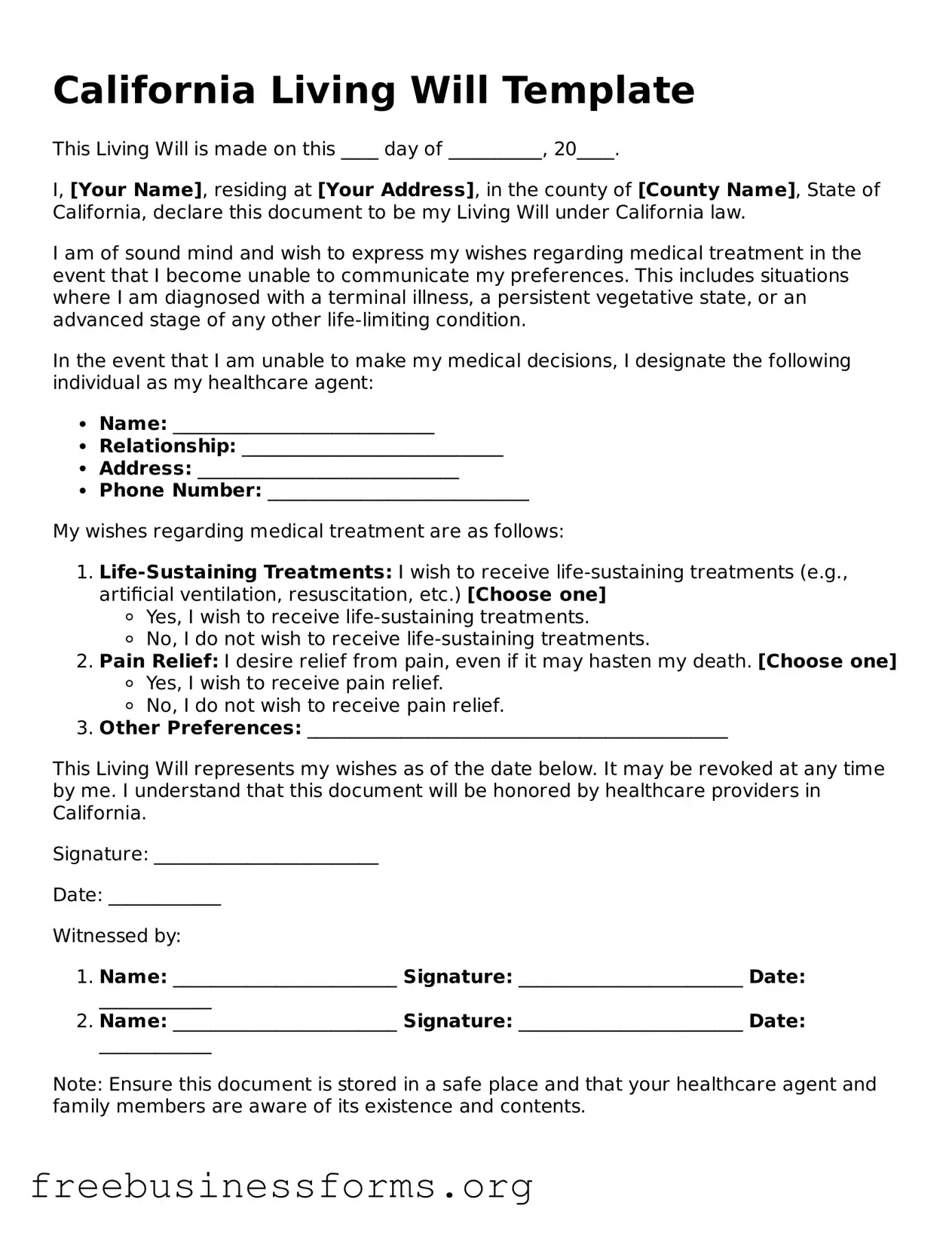California Living Will Template
This Living Will is made on this ____ day of __________, 20____.
I, [Your Name], residing at [Your Address], in the county of [County Name], State of California, declare this document to be my Living Will under California law.
I am of sound mind and wish to express my wishes regarding medical treatment in the event that I become unable to communicate my preferences. This includes situations where I am diagnosed with a terminal illness, a persistent vegetative state, or an advanced stage of any other life-limiting condition.
In the event that I am unable to make my medical decisions, I designate the following individual as my healthcare agent:
- Name: ____________________________
- Relationship: ____________________________
- Address: ____________________________
- Phone Number: ____________________________
My wishes regarding medical treatment are as follows:
- Life-Sustaining Treatments: I wish to receive life-sustaining treatments (e.g., artificial ventilation, resuscitation, etc.) [Choose one]
- Yes, I wish to receive life-sustaining treatments.
- No, I do not wish to receive life-sustaining treatments.
- Pain Relief: I desire relief from pain, even if it may hasten my death. [Choose one]
- Yes, I wish to receive pain relief.
- No, I do not wish to receive pain relief.
- Other Preferences: _____________________________________________
This Living Will represents my wishes as of the date below. It may be revoked at any time by me. I understand that this document will be honored by healthcare providers in California.
Signature: ________________________
Date: ____________
Witnessed by:
- Name: ________________________ Signature: ________________________ Date: ____________
- Name: ________________________ Signature: ________________________ Date: ____________
Note: Ensure this document is stored in a safe place and that your healthcare agent and family members are aware of its existence and contents.
